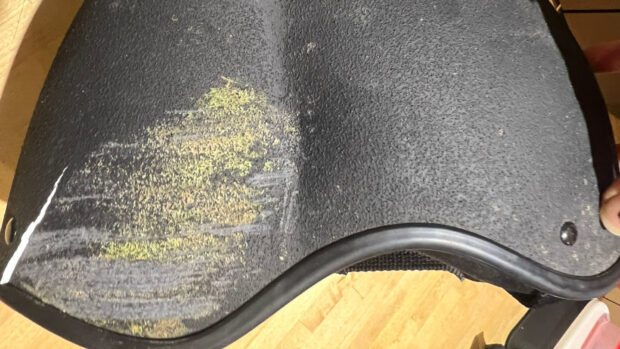MORE education on the risks associated with headcollars, and standardised guidance on fitting and use, would help reduce injuries, a study has found.
The research, published in Equine Veterinary Education, involved an online survey of 5,615 riders and industry professionals, with the aim of exploring headcollar use and safety.
Jane Williams and David Marlin, who carried out the project with Kirsty Pickles, told H&H that although headcollars are so commonly used, there is very little information available on their use and the associated risk factors.
The study found 88% of respondents used headcollars more than once a day, mainly for short time periods. Nearly a third, 31%, of people reported that a horse had been injured as a result of wearing a headcollar, from cuts and bruises to fractures in 134 cases. Of these incidents, in 70% of cases the horse was tied up, 15% also involved a person, and there were 167 equine deaths reported.
Of the injuries sustained, 39% were the result of the headcollar becoming caught up, and the same number related to horses pulling back. Other causes included a horse’s foot becoming caught in the headcollar and horses rubbing.
“We’re trying to say to people: if you’ve got a horse who’s a bit reactive, it’s probably not a good idea to tie it up in the stable while you’re mucking out, as that was one of the highest risks of injury in our study,” Dr Marlin said. “Or if you do, make sure you use a decent safety headcollar or safety device – which may not be baler twine.”
The study found generally, headcollars behaved as expected; so leather ones broke and safety headcollars opened under pressure, while synthetic collars were more often involved with injuries. But, Dr Williams said, although the use of baler twine between lead rope and tie point did slightly decrease the rate of injury in synthetic headcollars, it was slightly increased when used with webbing or leather designs. The age and type of baler twine used also contributes to whether it breaks easily or not and, in some circumstances, such as a tied-up horse reaching down for grass and getting the headcollar caught on something, the twine would not help prevent an accident.
Dr Williams said: “We had a lot of open questions, wanting to know more about headcollar use, and it was surprising how little people knew about fitting them; there are no real guidelines on fitting, or on how often they should be replaced.”
Dr Williams added that good general advice is to use a safety headcollar and/or device, and consider each situation and each horse as an individual.
“People want to do their best for their horses, and sometimes there’s not the evidence to support them,” she said. “So we’re asking people to think, and maybe there will be some guidance produced to help others make informed decisions.”
You might also be interested in:

Body image a significant issue for riders, study finds

Breastplates change the way horses jump, research finds
Extensive analysis showed that wearing breastplates alters horses’ jump in terms of trajectory and angles

Leather headcollars for travelling, competing and everyday wear

‘Intelligent’ headcollar allows owners to monitor horses from afar *H&H VIP*
A new high-tech headcollar allows owners to check their horses' health using smartphones

Princess Anne: don’t hack with ‘ears full of music and phones’
The National Equine Forum president spoke on road safety at the end of yesterday's meeting
Horse & Hound magazine, out every Thursday, is packed with all the latest news and reports, as well as interviews, specials, nostalgia, vet and training advice. Find how you can enjoy the magazine delivered to your door every week, plus options to upgrade to access our H&H Plus online service which brings you breaking news as it happens as well as other benefits.




